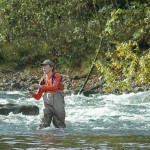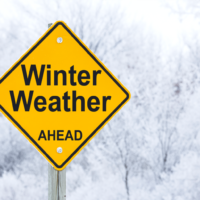
Fishing for steelhead will remain closed into next year for the mainstem Columbia from The Dalles Dam upstream to the OR/WA border and in all or parts of several mid-Columbia tributaries (Deschutes, John Day, Umatilla, Walla Walla) in Oregon to protect the A/B-Index summer steelhead return that includes ESA-listed fish.
See the Recreation Report Fishing Report for angling zone regulations (Columbia, Central for Deschutes, Snake and NE zone for other tributaries) https://myodfw.com/recreation-
Even though it will soon be 2022, summer steelhead from 2021’s record low upriver run remain present in the mainstem Columbia and tributaries above The Dalles Dam. The passage of approximately 67,750 fish at Bonneville Dam this year was 70 percent of the forecast and the lowest return on record.
The extended closure is meant to protect this run of fish that started entering the Columbia River in July 2021 and passed Bonneville Dam through October. These fish are still making their way through the river system to the upper Columbia, Snake River and tributaries.
Since 2017, Oregon and Washington fishery managers have implemented a number of fishery restrictions throughout the Columbia River and various tributaries to minimize steelhead mortalities due to the declining returns. Protective regulations have included broad area and time closures, one-steelhead bag limits when open, thermal angling sanctuaries, and hoot-owl restrictions (closing fishing at 2 p.m. before temperatures are warmest).
In addition to protecting wild summer steelhead, fishing closures have helped ensure that hatcheries throughout the system were able to collect sufficient broodstock to spawn the next generation of hatchery steelhead.
While recent summer steelhead returns have been poor, there are hopeful signs that conditions for salmon and steelhead may improve in the Columbia Basin in coming years. The Pacific Northwest is in a La Nina cycle this season. That means cooler ocean temperatures and more rain and snow that may help alleviate the drought and improve habitat conditions for salmon and steelhead.
NOAA also estimates that ocean conditions off Oregon in 2021 were the second-best since sampling of ecosystem indicators started in 1998. These improved conditions should result in better ocean survival and subsequent adult returns.
Although many steelhead fisheries have been constrained in recent years, opportunity remains available. Per permanent regulations, fishing for hatchery winter steelhead is currently open in the Columbia River downstream of The Dalles Dam and in most adjacent tributaries.
Summer steelhead fishing opportunity exists in segments of the Imnaha, Umatilla and Grande Ronde where return data indicates broodstock needs will be met and impacts to wild fish will be low. For example, the bag limit for hatchery steelhead will increase to two fish beginning Jan. 1 in the Snake River from Lewiston to Hells Canyon Dam.
Since poor summer steelhead returns may persist in the near-term, fish biologists across the region will be coordinating on future protective measures while considering equitable sharing of the conservation burden.















